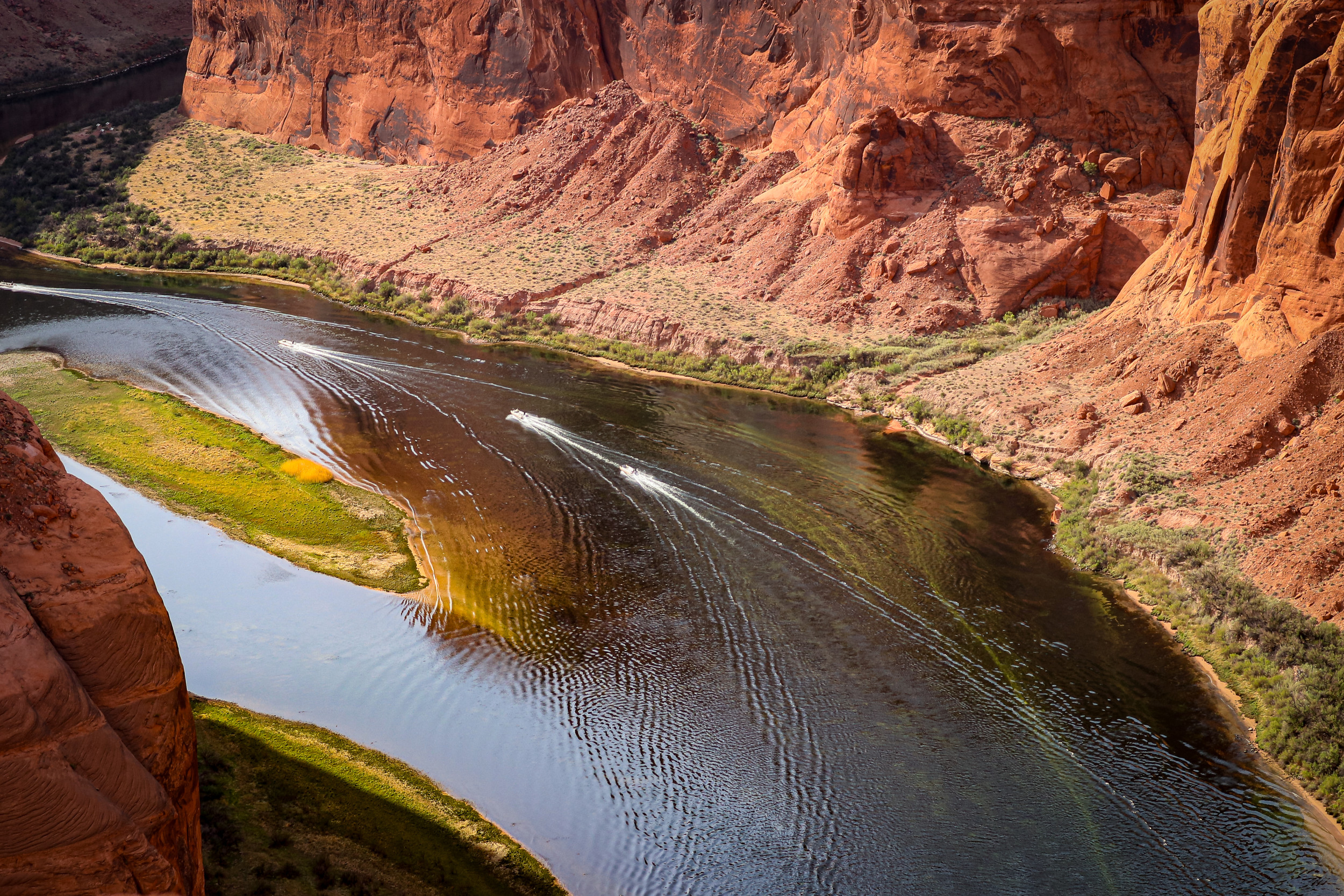With Lake Powell’s water levels declining over the years, the Glen Canyon is seeing a resurgence of lush plant life.
Previously submerged areas are emerging, transforming into vibrant ecosystems bustling with wildlife.
Some researchers advocate for keeping the canyon’s ecosystem dry to foster its growth, while others argue that maintaining Lake Powell’s water levels is crucial for the southwestern U.S.

Lake Powell, a man-made reservoir along the Colorado River between Utah and Arizona, was formed by the Glen Canyon Dam’s construction in the 1960s to store water, generate hydroelectric power, and facilitate recreation. Over recent years, a persistent “megadrought” has significantly diminished water inflows, affecting both the lake and surrounding communities that rely on its resources.
As of August 19, Lake Powell stood at 3,581.96 feet above sea level, about 38.8% of its full capacity. The full pool level is 3,700 feet, and it enters a dead pool at 3,370 feet, where power generation halts.
Despite the alarming decline, the drop in water levels has revealed vast tracts of land, revitalizing the desert landscape with native flora. This unexpected comeback has sparked discussions about how to manage the area going forward.
“Nature has given us a second chance to reevaluate how we’re going to manage this place,” remarked Seth Arens from the University of Colorado Boulder, emphasizing nature’s ability to foster ecosystems effectively.

This flourishing environment is attracting various birds, lizards, mammals, and other wildlife, leading some advocates to argue against raising water levels, suggesting instead that the water might be better stored elsewhere.
“The old belief that Glen Canyon can just hold water without consequence is outdated,” stated Eric Balken of the Glen Canyon Institute. “The ecological impact of keeping it full is significant.”
A recent report from the U.S. Bureau of Reclamation highlighted concerns over invasive species in the canyon as water levels continue to drop, warning of potential ecological threats. However, Balken countered this by pointing out the thriving biodiversity that’s emerging.
A spokesperson for USBR mentioned that they primarily consider downstream impacts when calculating vegetation effects, suggesting that annual snowmelt could be more influential on water levels than their current releases.
